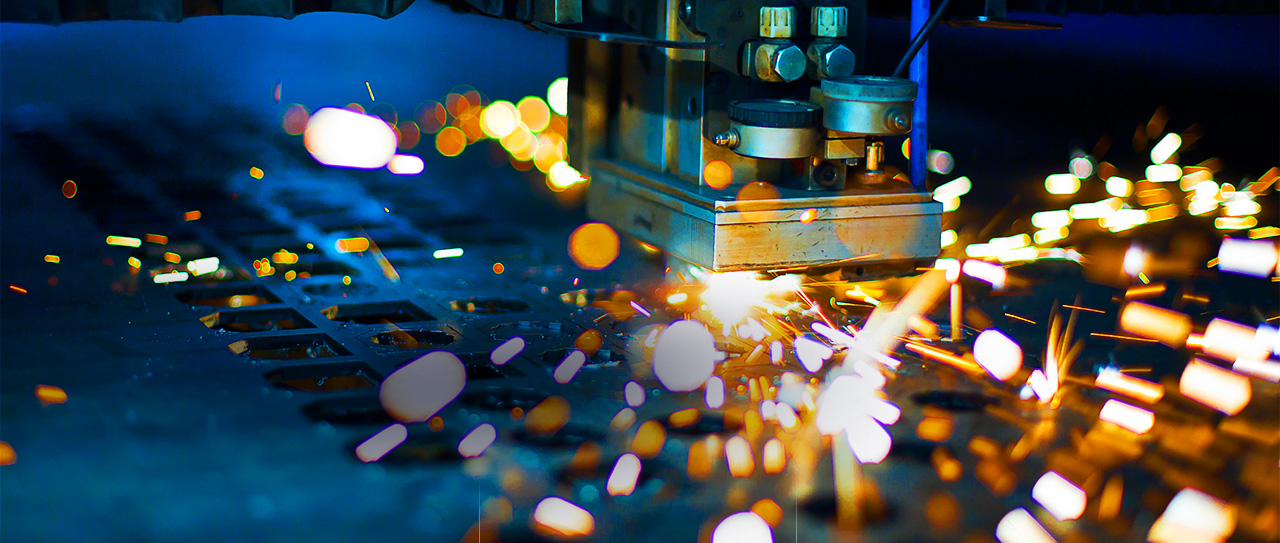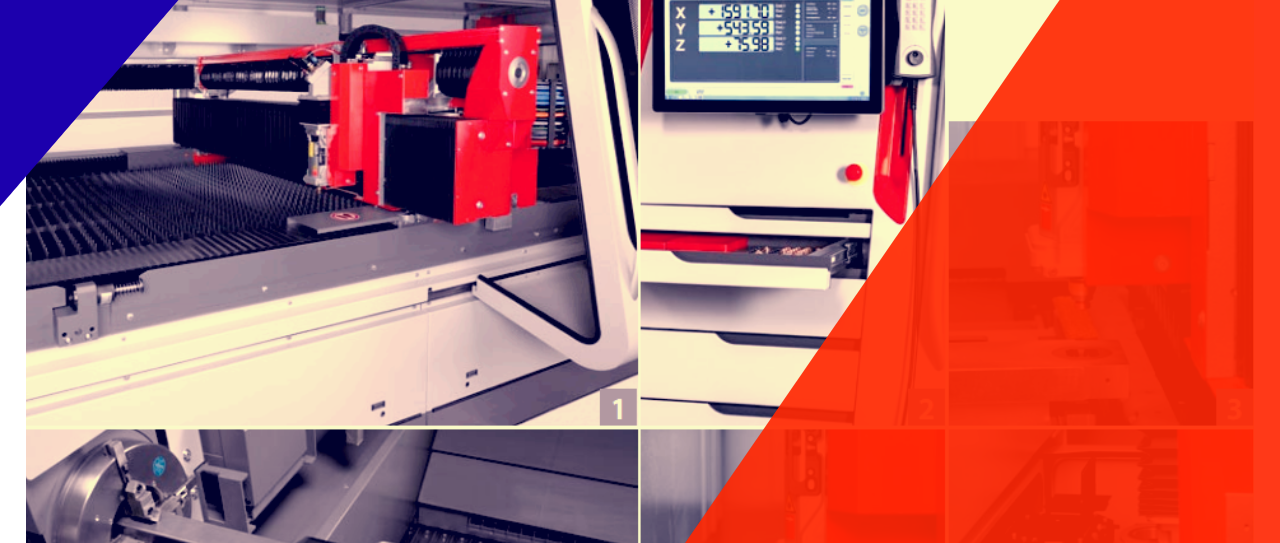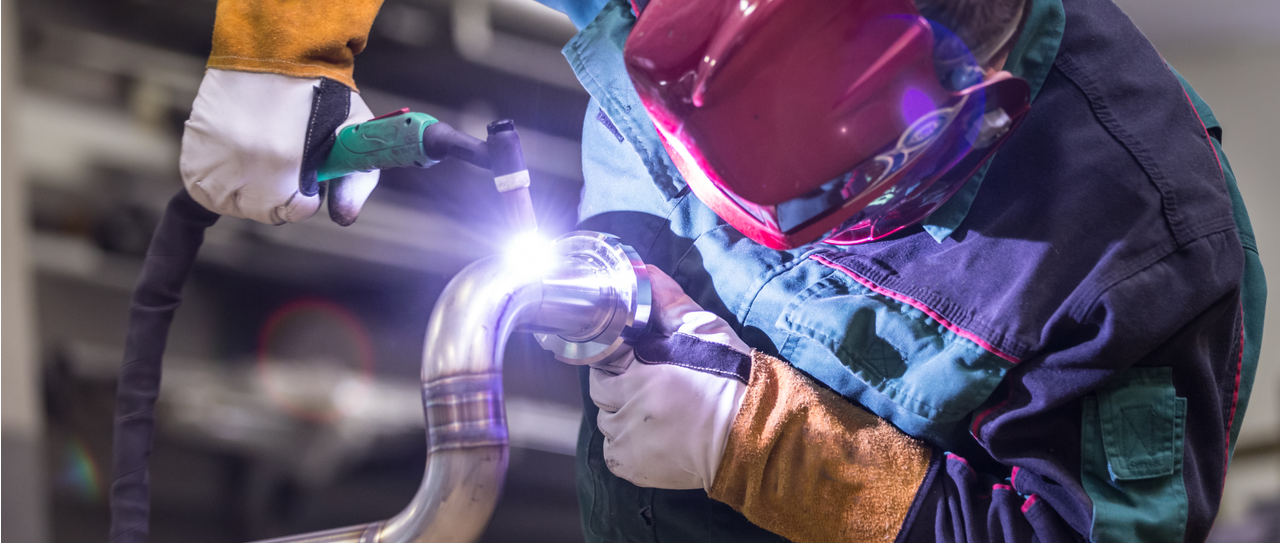Since people realized the precision and efficiency of laser cutting in the early 1960s, industrialists are looking for ways to implement this cutting-edge technology to their respective industries. That’s why, from clinical to aerospace use, laser cutting is ruling over metal integrity without raising any questionable eyebrows in case of profit. Laser cutting is usually the first step of the process before it continues down the line to undergo metal bending, metal rolling, and other types of metal fabrication in stainless steel, mild steel and aluminium.
But what is this Laser Cutting that everyone is talking about?
Laser cutting is a process to cut or engrave any material precisely, using a high-powered beam. Mostly, the entire process is based on computer-controlled parameters, directed by Computer Numerically Controlled (CNC) Machine from a vector CAD file.
The Laser cutting technology is used for many industrial purposes. Specifically, to cut metal plates, like Aluminium, Stainless Steel, Mild Steel, etc. On these types of steel, laser cutting process is very precise compared to any other metal sheet cutting process. Besides, Laser cutting process has a very small heat afterzone and also a small kerf width. That’s why it’s possible to delicate shapes and tiny holes for production.
How Laser Cutting Technology Works
Laser is a fancy acronym for Light Amplification by Stimulated Emission of Radiation, which is the main participant in this process, is a beam of heavily intensified light. This beam of light is formed by a single wavelength or single color.
The Laser machines use amplification and stimulation technique to transform electric energy into high density beam of light. The stimulation process happens as the electrons are excited via an external source, mostly an electric arc or a flash lamp.
The amplification process occurs within the optical resonator in the cavity, which is set between 2 mirrors. One of them is partially transmissive and the other one is reflective. The glasses allow beam’s energy to get back in the lasing medium and there it stimulates even more emissions. But if a photon isn’t aligned with machine’s resonator, the reflective and transmissive mirror do not redirect it. This ensures amplification of properly oriented photons only, thus creating a coherent beam.
The color or the wavelength of the laser that cuts through the metals depends on which type of laser is being used in the laser cutting process. But mostly, Carbon Di-oxide (CO2) gets to cut the metals which is a highly intensified beam of Infra-red part of the light spectrum.
This type of beam travels through the Laser resonator before going through metal sheet to give them shapes. But before the beam falls over the metal plates, the focused light beam undergoes the bore of a nozzle, just before it hits a surface.
But focusing the light beam is not so easy. The laser has to go through a specialized lens or any type of curved surface. This focusing part of the laser happens inside the laser-cutting tip. The focusing is crucial to this cutting process because if the beam is not focused concisely, the shape will not be as expected. The operators cross check the focus density and width many times before hitting the metal with it.
By focusing this huge beam into a single point-like area, the heat density is increased. Then the high-temperature beam, focused on a single point can cut through even the strongest of metals. This works like the magnifying glass. When the solar rays fall on the magnifying glass, the curved surface gathers them into a single point, which consequently produces extreme heat in a small area and that’s why the dry leaf under the magnifying glass burns out.
The laser cutting process work on the same principle. It gathers lights into a small area that starts rapid heating, partial or complete meltdown and even vaporization of the material completely. This heat from laser beam is so extreme that it can start a typical Oxy fuel burning process when the laser beam is cutting mild steel.
And when the laser beam hits Aluminium and Stainless steel surface, it simply melts down the metal. Then the pressurized Nitrogen blows away molten Aluminium or Steel to finish the industrial-grade clear and precise cutting.
On the CNC laser cutters, cutting tip/head is moved on the metal surface to create the desired shape. For maintaining accurate distance between the plate and the nozzle end, usually a capacitive height control system is adopted.
Maintaining this distance in this case is crucial because the distance determines where the focal area is relative to the surface of the metal plate. The precision of cutting can be diverted by lowering or raising the focal point from the surface.
Types of Laser in Laser Cutting Technology
Basically, there are 3 different types of lasers used in laser cutting process. Most common one is CO2 laser, which is suited for engraving, boring, and cutting. Then there is Neodymium (Nd) and the Neodymium Yttrium-Aluminium-Garnet or Nd:YAG for short. Nd and Nd:YAG is identical in style but have few dissimilarities in application. Where Nd is used for boring that required high energy but low repetition, Nd:YAG is used for both engraving and boring with high power.
All 3 types can be used for welding purpose.
Besides, laser cutting technology comes in 2 different formats. Gantry and the Galvanometer system. Where in Gantry system, position of laser is perpendicular to the surface and the machine directs the beam over the surface, in galvanometer system, the laser beams are repositioned by using mirrored angles.
This is the reason why gantry is comparatively slower and manufacturers usually adapt this format for prototyping. But galvanometer system is way faster. In this format, the machine can pierce through 100 feet of steel in a minute. That’s why Galvanometer system is more commonly used for full-on production work.
Designing for Laser Cutting
For automatic cutting, laser machines require CAD Vector files. These files are prepared in soft wares like InkScape, Adobe Illustrator, AutoCad, etc. These CAD (Computer Aided Design) files are exported as .eps, .pdf, .dff, and .aj formats.
Why use Laser Cutting Technology over any other process?
Laser cutting technology can be useful for both mass production and start-up order. Here’s why industrialist and entrepreneurs believe in laser cutting more than anything:
Cost efficiency
The cost efficiency of Laser cutting is something that is much rare in other metal curving technologies. In mass production, Laser cutting technology is very efficient in cutting a good chunk of manual engineering jobs, which helps you keep minimal production cost.
Time Saver
By sparing some really costly and time consuming engineering job for the laser machine, you can balance your production cost as well as save some precious time.
Precise Cutting
With laser cutting, you get even more precision in shaping your metals. The cutting technology is more efficient than plasma cutting, which is a compliment on its own. From getting exact replica of your design to smooth and clear finish, laser cutting does that for you with maximum precision.
Energy Efficiency
Apart from cutting a slack from the production cost, this cutting edge technology is also efficient in saving energy consumption while shaping the metals. While a traditional metal cutting machine will require around 40-50 KW of power, with laser cutting, you can get it done with 10 KW. That’s a lot of saving if it is being used for full-on production.
Reduced Contamination of Workpiece
Compared to other traditional metal cutting techniques, laser cutting technology is far more efficient in utilizing the most of your workpiece without wasting it while engraving, or cutting rounded edges.
Easy and Delicate Boring
Not only does it gives precise and clear-cut edges, but also, laser cutting technology is embraced when piercing through metal bodies with very small diameter. Even with such small width, you get precise holes. That’s why it’s best suited for delicate works in the factory.
Cuts almost anything in almost any shape
If you can design it, laser cutting technology can make that happen and that’s why industrialists are depending on laser machines for making prototypes for their product.
Conclusion
It’s no mystery why manufacturers constantly choose laser cutting for their prototype and their final production over any other traditional metal engraving process. With its precise cutting, smooth edge, cost and energy efficiency as well as many other profitable advantages, it seems like the use of laser cutting in different sectors and industries is not likely to decrease in next decade or so. And it is indeed a wise decision to shift from traditional expensive metal cutting technologies to this efficient process of shaping ideas. Click here to return to the main page.








